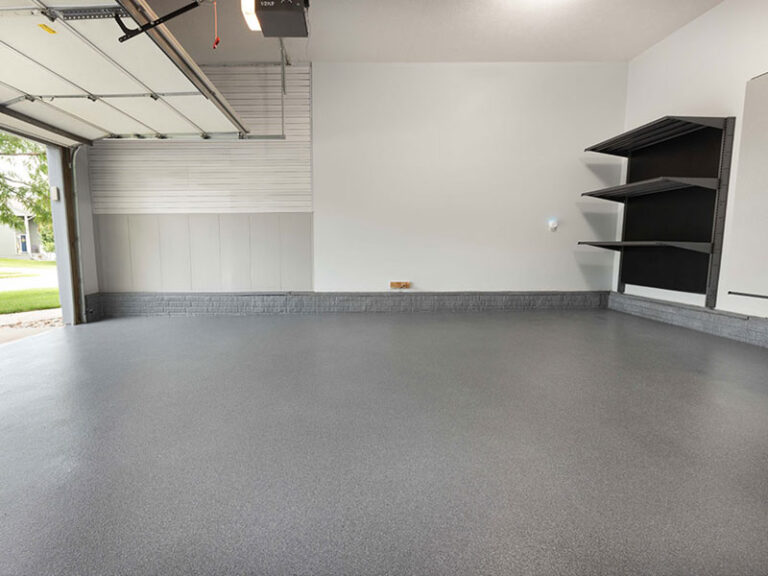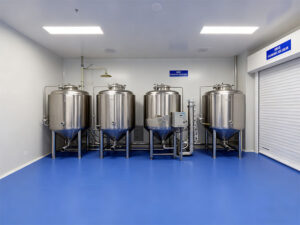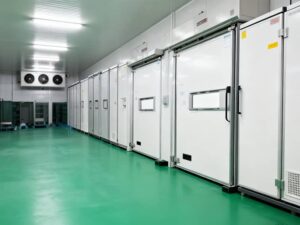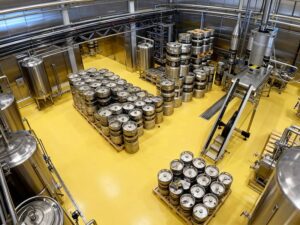1. Introduction
Choosing the right floor coating is crucial for protecting your surface and extending its lifespan. In industrial, commercial, and even residential settings, epoxy coatings and polyaspartic coatings are two of the most popular options. But which one is best for your needs?
This guide will compare polyaspartic floor coating vs epoxy in terms of curing time, durability, cost, and installation requirements to help you make an informed decision.
2. What Are Epoxy and Polyaspartic Coatings?
2.1 Epoxy Floor Coating
Epoxy is a two-part system made of resin and hardener that chemically bonds to form a tough, durable surface. Common applications include:
- Garage floors
- Industrial facilities
- Warehouses and workshops
Pros:
✅ Strong adhesion, ideal for concrete
✅ Lower cost
✅ Customizable colors and decorative finishes (e.g., quartz, metallic flakes)
2.2 Polyaspartic Floor Coating
Polyaspartic is a polyurethane-based coating with fast-curing technology, combining the strength of epoxy with the flexibility of polyurethane. Typical uses:
- Commercial spaces (malls, hospitals)
- Outdoor parking lots
- Projects requiring quick turnaround
Pros:
✅ Ultra-fast curing (walkable in 1-4 hours)
✅ Superior UV resistance (no yellowing)
✅ Excellent chemical and abrasion resistance
3. Key Differences: Polyaspartic Floor Coating vs Epoxy
3.1 Curing Time
| Feature | Epoxy | Polyaspartic |
|---|---|---|
| Walkable Time | 12-24 hours | 1-4 hours |
| Full Cure Time | 24-72 hours | 24 hours |
Conclusion:
- Choose polyaspartic for fast projects (e.g., retail stores, hospitals).
- Epoxy is cost-effective if time isn’t a concern (e.g., home garages).
3.2 Durability & Performance
| Feature | Epoxy | Polyaspartic |
|---|---|---|
| Impact Resistance | High | Very High |
| UV Stability | Poor (yellows) | Excellent |
| Chemical Resistance | Moderate | Very High |
Polyaspartic Wins When:
- Used outdoors (e.g., polyaspartic vs epoxy garage floor).
- High-traffic areas (e.g., factories, warehouses).
3.3 Installation Conditions
| Feature | Epoxy | Polyaspartic |
|---|---|---|
| Temperature Range | Above 50°F (10°C) | -4°F to 122°F (-20°C to 50°C) |
| Humidity Sensitivity | High (bubbling risk) | Low |
Epoxy Limitations:
- Difficult to apply in cold or humid weather.
- Polyaspartic works year-round, ideal for urgent projects.
3.4 Cost Comparison
| Feature | Epoxy | Polyaspartic |
|---|---|---|
| Material Cost | $2-$5/sq ft | $5-$8/sq ft |
| Lifespan | 5-8 years | 10-15 years |
Long-Term Value:
- Polyaspartic costs more upfront but lasts longer, reducing recoating needs.
4. Pros and Cons Summary
4.1 Epoxy Floor Coating
Pros:
- Affordable for budget-friendly projects.
- Strong adhesion to concrete.
- Customizable finishes.
Cons:
- Slow curing delays project completion.
- Vulnerable to chemicals (e.g., oil, gasoline).
- Yellows under UV exposure.
4.2 Polyaspartic Floor Coating
Pros:
- Fast curing saves time.
- UV-resistant, no yellowing.
- Withstands extreme temperatures.
Cons:
- Higher material cost.
- Requires professional installation.
5. Which Should You Choose? Epoxy or Polyaspartic?
5.1 When to Choose Epoxy
- Low budget: Home garages, basements.
- Indoor use: No UV exposure.
- Flexible timeline: No rush to use the space.
5.2 When to Choose Polyaspartic
- Commercial/industrial use: Malls, factories, hospitals.
- Outdoor applications: Epoxy vs polyaspartic garage floor (UV resistance matters).
- Quick projects: Need fast turnaround.
6. Installation Tips for Best Results
6.1 Surface Preparation
Critical for both coatings:
- Clean: Remove oil, dust, and debris.
- Grind: Use a diamond grinder for better adhesion.
- Repair cracks: Use epoxy filler.
6.2 Epoxy Application Tips
- Apply in two coats (primer + topcoat), waiting 8-12 hours between layers.
- Keep humidity below 85%.
6.3 Polyaspartic Application Tips
- Work in small sections (fast curing).
- Use a professional trowel for even coverage.
7. Frequently Asked Questions (FAQ)
Q1: Can You Apply Polyaspartic Over Old Epoxy?
✅ Yes, but sand the old coating and clean thoroughly.
Q2: Which Lasts Longer: Epoxy or Polyaspartic?
🔹 Polyaspartic (10-15 years vs. epoxy’s 5-8 years).
Q3: Is Polyaspartic Worth the Higher Cost?
💡 Yes—long-term durability and time savings justify the price.
8. Conclusion
- Epoxy = Budget-friendly, best for indoor use.
- Polyaspartic = Premium performance, ideal for high-traffic and outdoor areas.
Final Tip: Test samples or consult a professional installer for epoxy vs polyaspartic garage floor projects.







